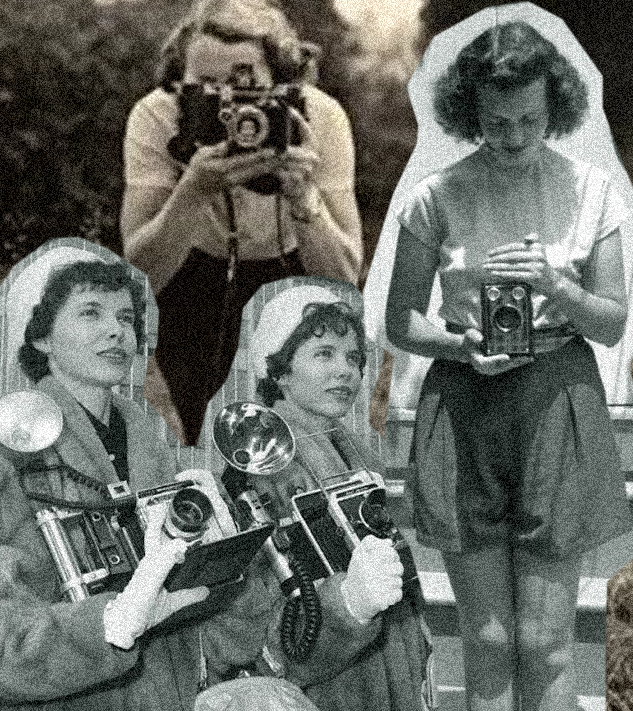‘Photo Dump!’ Why are We Obsessed with Taking Photos of Everything
It can’t be denied, we’re the photo-taking generation: a live music event, a puddle of petrol rainbowing in the sun, you name it, we’re snapping it. But as photo taking has grown a fresh limb in the realm recently, from BeReal to TikTok’s slideshow feature, it seems that documenting our lives has become something more than just an appreciation of the world’s prettiest looking things.
The Photo Dump I’m sure we’re all aware, began on Instagram with quirky captions to eclectically curated images. But where these ‘dumps’ offered a sense of effortless cool, there still lingered an excessive curation of glamour behind every photo; the best photo from your weekend away for example, or the most sophisticated of your dinner party set up; the ‘dump’ gave spectacle to ordinary life but still in a way that felt unattainable. And it’s from this that I feel the TikTok photo dump differs; while we’re still showcasing our lives, we seem now to be relinquishing this need to perform in the same way. I find myself swiping through a person’s empty breakfast plate, their tub of vitamins, their grey view from the bus, people are archiving their days through their most everyday moments and often in the most imperfect ways.
For many this overuse of the phone camera seems ridiculous - we often hear outcries against their use at big events like concerts or art shows - why take a photo when the memory is better? But as our world seems to be in constant turmoil is the privilege of memory being pulled from beneath our feet? In his theories of photographical semiotics, Roland Barthes writes about the signifier of the image, and its separation from the signified object. In better terms, the flower in your photograph isn’t really a flower, and it never has been, but rather it is a signifier of the real thing. Applying Barthes to this newfound surge of the photograph-everything mindset and more specifically, our generation’s existentialism towards issues like climate change and political unrest, perhaps our eagerness to document our days is simply in response to the global issues that surround us?
___STEADY_PAYWALL___
As our environment dies, what actually is more real - the image of the flower on our camera roll, or the dried-up piece of ground where it once grew? Younger generations have always been collectors, the ephemera of souvenirs, set lists and magazines, we cling to things that define a certain era. But as political and environmental unrest has developed, and advanced technology is in almost everyone’s pocket, the Android and the iPhone have ultimately become the ephemera of the entire human race. As a species we’re met with the possibilities of rapid extinction every day, and with the knowledge that we as a generation may not survive to see our 70s, a short photo burst of what we do in a day might be the only evidence of life to outlive us.
It's also, arguably, beautiful in its own right: the way people are seeking to capture the beauty in banal things. Where a photo of your friends chugging aperols in Italy is always going to make for a great photo, it’s a memory you’re likely to keep anyway. But what you did on that random Tuesday in March, or what plant milk you were obsessing over in November, are things your brain could care to forget. In a sense our camera rolls have become a time capsule of self-identity.
“For photo diaries that users can add captions to, overlay music, and viewers can interact with, this documentation feels communal.”
In her 2019 Vice Article, Freya Marshall Payne considers this digital documentation as a modern format of female life writing. Used throughout history in the mediums of scrapbooking and journals, female life writing in unofficial forms dates back to the 18th century, with curation and aesthetic organisation at its forefront, just as it still is today. The Instagram photo dump took an approach to life writing that though natural, still felt curated, still planned to be as pretty as possible without really trying. But as the slideshow has moved to TikTok and photo series day dumping has become a prime trend, the need for curation though still not gone entirely, has shrunken somewhat. We’re appreciating the smallest things in life, the things we’re only barely able to afford in a Cost-of-Living Crisis, the things that in 30 years of global warming will likely cease to exist. It appears to be the most authentic approach to self-preservation since the digital age took over.
In a way the TikTok photo dump offers something new that female life writing never had - it’s social. Where journaling your thoughts and placing souvenirs into slip pages was beneficial, it was also introspective. For photo diaries that users can add captions to, overlay music, and viewers can interact with, this documentation feels communal. In it, there’s a comforting sense of solidarity. One that seems to say: life is mundane, but we exist, we’re grateful and we’re doing this together.
Words: Mia Autumn Roe


